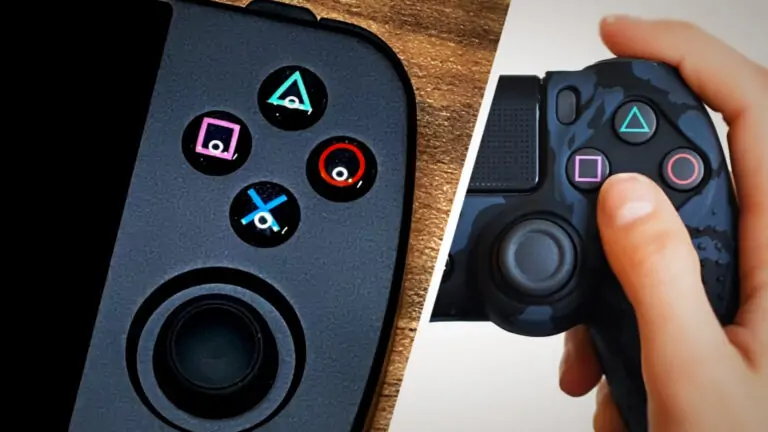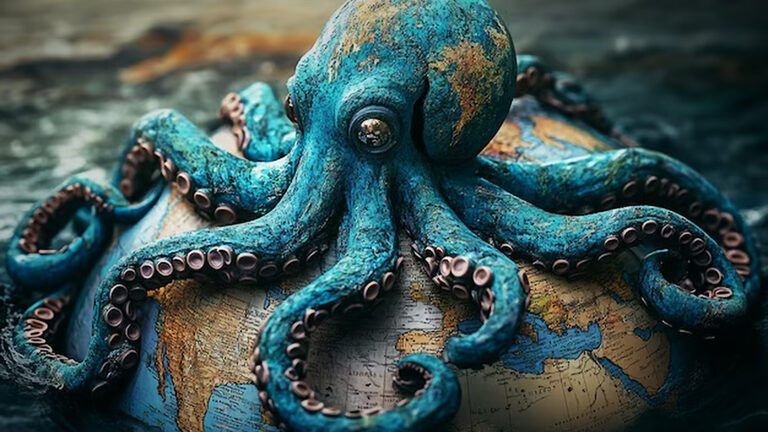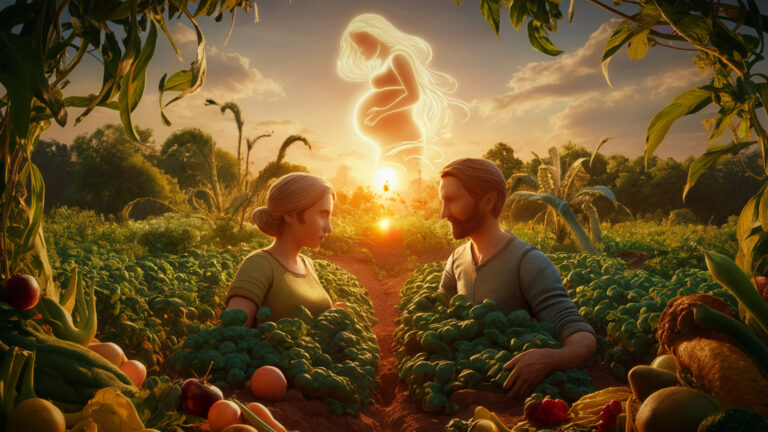Can You Find the Third Dog?Unbelievable Optical Illusion That Will Shatter Your Reality

Optical illusions are fascinating, aren’t they? The way our brains perceive what our eyes see can be incredibly deceptive, even when we’re sure about what’s in front of us. From iconic illusions like the Ames window, which seems to shift back and forth when it’s actually rotating 360 degrees, to the spiraling effect in Van Gogh’s Starry Night, our brains constantly trick us into seeing things that aren’t there. But here’s the twist—sometimes, these illusions happen completely by accident. And that’s where the fun really begins!
The Optical Illusion That Became an Accident
Recently, a viral post on X (formerly Twitter) shared an image that left people scratching their heads. The photo, at first glance, looks like a person and two dogs in the snow. Simple enough, right? But as you look more closely, something strange happens—you realize there’s a third dog in the picture, and it’s not what you expected. For a while, I couldn’t see it either, even after someone pointed out the “human” in the image is actually a dog.
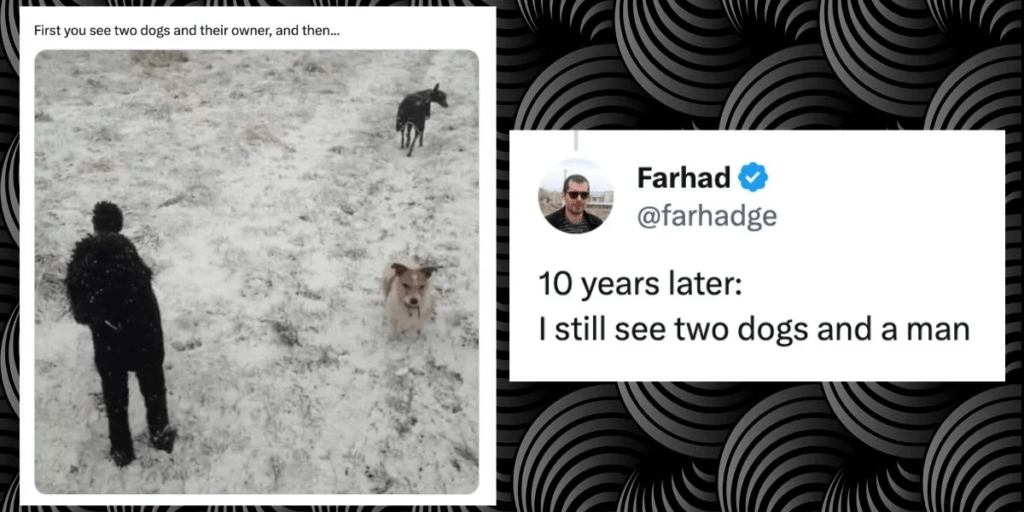
The confusion? The “person” is actually a black poodle! The furry “hat” that seemed to be perched on top of the person’s head is, in fact, the poodle’s tail. The “scarf” draped around the neck of this person? Nope, it’s the poodle’s head. The fur blends in so well with the snow that our brains fail to pick up the obvious clues. What we see is the outline of what looks like a human wearing all black, complete with a furry jacket and a hat. A perfectly reasonable mistake—unless you know the trick.
Why Does Our Brain Do This?
This optical illusion works because our brains rely on certain visual shortcuts to process information quickly. When something doesn’t quite match up—like the contours of the poodle’s body blending with the background—our brain fills in the gaps with assumptions. It “sees” what it expects to see, not necessarily what’s actually there.
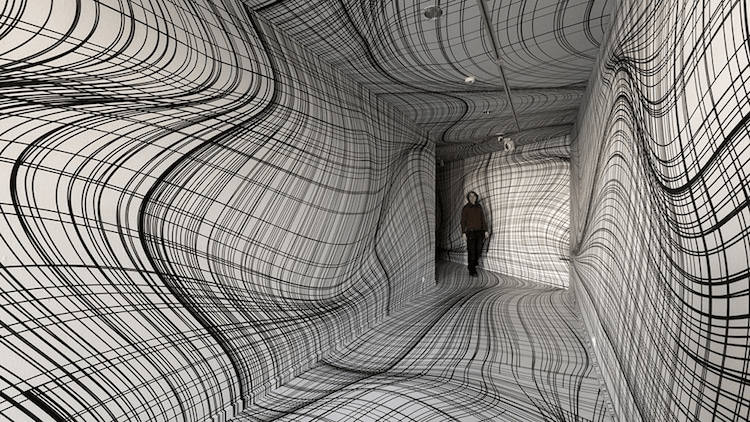
One person explained it perfectly: “The black fur hides the contours and shadows, so our brains focus only on the outline, making it appear like a person facing away.” This shows how our brains interpret incomplete information. Sometimes we miss key details, which makes optical illusions so captivating. They play on our perception, turning simple images into complex puzzles. It’s this mix of misinterpretation and curiosity that keeps us coming back for more.
The Fun of Optical Illusions: Seeing Isn’t Always Believing
What makes these optical illusions so entertaining is that they remind us of just how human we are. Our brains aren’t perfect. Unlike a computer or AI, which processes data without making assumptions, we’re constantly interpreting sensory input based on past experiences, expectations, and sometimes, just pure guesswork. The fact that a photo can confuse us so completely is a testament to how our brains work, and how easily they can be fooled.
And let’s be honest, it’s pretty hilarious to see people’s reactions when they realize the truth. One commenter wrote, “10 years later: I still see two dogs and a man.” The struggle is real!
Who knows what your eyes might really be seeing?
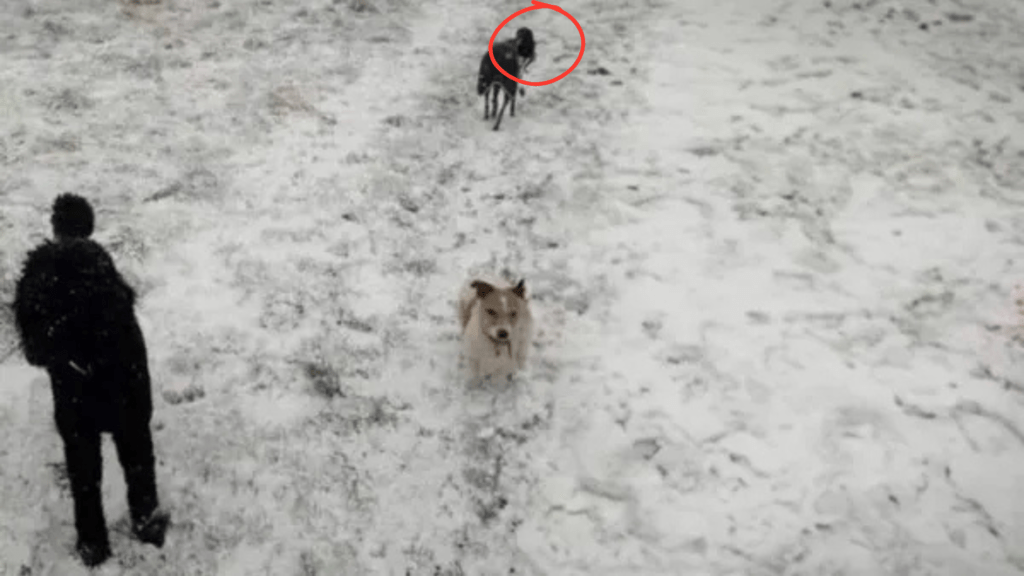
Embracing the Mystery of Perception
At the end of the day, optical illusions are more than just puzzles—they’re a playful reminder of the quirks in how our minds interpret the world around us. They make us appreciate the complexity of human perception and, let’s face it, give us a good laugh. So, next time you encounter an optical illusion, take a moment to appreciate the wild, imperfect way your brain is working.



